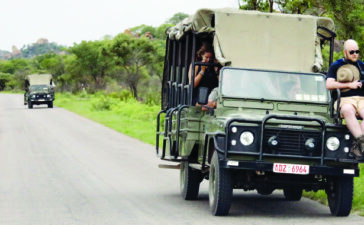Recently updated on March 12th, 2024 at 04:07 pm
To achieve its potential to contribute to economic stimulation and employment creation, tourism must be given the highest priority as a serious economic sector – not as the tertiary sector where it is positioned now in South Africa.
“South Africa’s travel and tourism sector is underperforming,” said CEO of the Tourism Business Council of South Africa, Tshifhiwa Tshivhengwa, speaking at the council’s inaugural Tourism Leadership conference in Sun City, North West province last week (September 14 to 16).
He pointed out that the tourism sector worldwide had averaged a contribution to GDP in 2019 of 10.3%. “While the South African tourism sector has the basic resources to achieve more than the average, the current GDP contribution is 3.7%.”
To meet the target of growing tourism numbers from around 10.2 million (2019 figures) to 15.6 million by 2030 – as part of TBCSA’s Tourism Growth Strategy 2030 – key constraints in the business and enabling environment must be addressed to allow the industry to flourish, said Tshivhengwa.
“If we achieve the 2030 target, the sector’s GDP contribution will increase from R209bn (€12.2bn) to R394bn (€20.5bn) and tourism consumption (of products and services) will double from R451bn (€26.5bn) to R850bn (€50bn),” he explained.
Furthermore, noted Tshivhengwa, 1.3 million more employment opportunities would be created and there would be 25% to 39% higher spending from foreign tourists.
He outlined 10 interventions that were needed to stimulate tourism growth and achieve these targets:
- A ‘real’ fully automated world-class e-Visa with improved airport e-infrastructure
- Waive visas for more source markets
- Introduce critical skills visas, temporary work visas
- Vehicle licensing backlogs must be addressed
- Reduce or fix other red tape issues holding back growth
- Destination readiness – faster reaction to new opportunities
- Additional funds for tourism marketing
- Private-Public Partnerships to radically improve and implement marketing – especially in key growth markets
- Air liberalisation and a national air access initiative (not just provincially focused)
- Investment incentives
Key growth markets
Tshivhengwa pointed out that the African air markets, India and China had been identified as key growth markets.
He said there were over 154 million outbound Chinese tourists recorded in 2019 and the country’s outbound market was set to become the second biggest outbound market for long-haul travel by 2030.
India, which saw 26.9 million outbound travellers in 2019, has a growing middle and professional class of traveller that was increasingly seeing South Africa as a ‘highly attractive’ destination.
Africa’s inbound air markets could potentially swell to more than 70 million tourists as its middle- and upper-income groups were growing and the continent was experiencing stronger economic growth than traditional markets.
“Furthermore, COVID catalysed middle-income and upper-income domestic tourism and we believe that trend is here to stay,” said Tshivhengwa. He added that should barriers such as pricing be a challenge, this must be discussed. – Tourism Update











